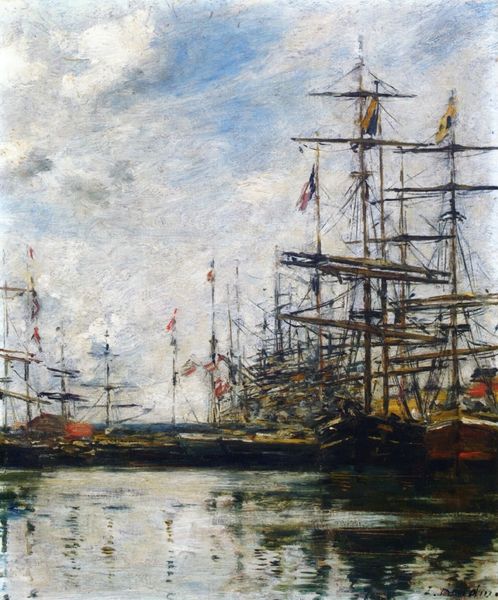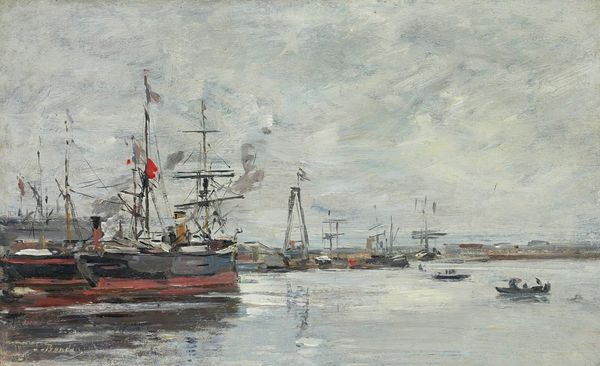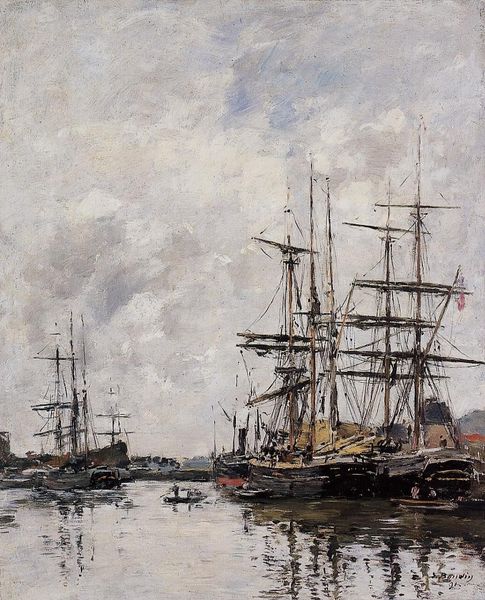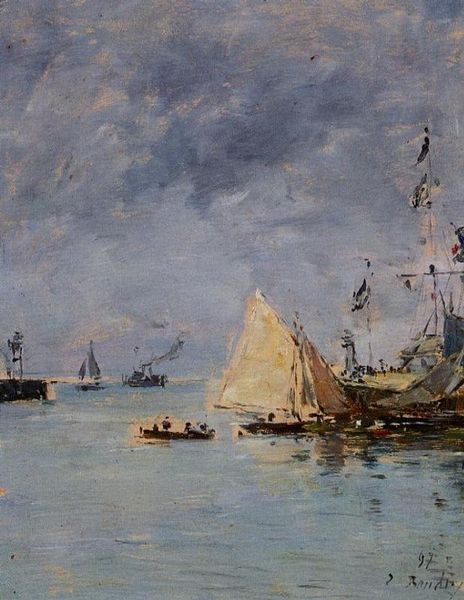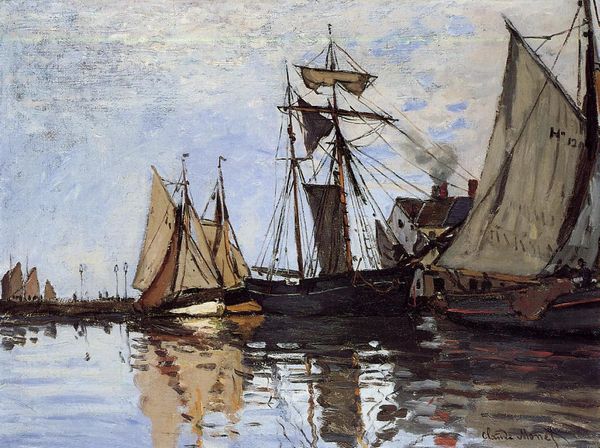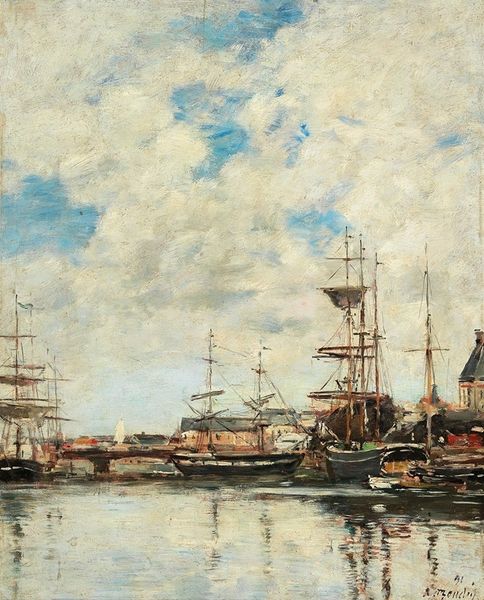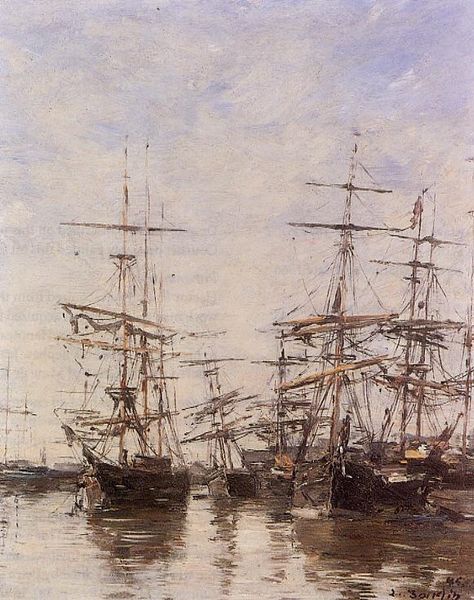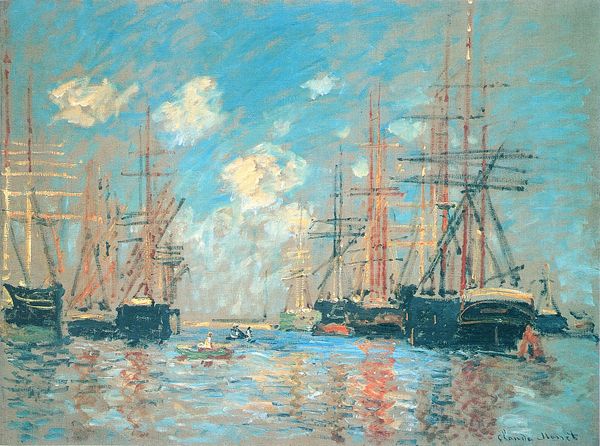
Copyright: Public Domain: Artvee
Curator: Immediately, the overall impression is of shimmering light, festive and joyous, wouldn't you agree? Editor: Indeed. We're looking at Eugène Boudin’s “Yacht Basin at Trouville-Deauville,” likely painted around 1895-1896. The scene depicts a series of ships adorned with flags, rendered in oil on canvas. Curator: Flags fluttering, boats bobbing… it’s a party on the water! What strikes me is the soft, almost blurry quality. Like a memory, perhaps. Boudin really captures a fleeting moment. Editor: Precisely. His brushstrokes are loose, evocative. Consider the reflections on the water. Note the broken strokes of blues and grays mirrored across the surface, giving the illusion of depth and movement. It exemplifies plein-air painting. Curator: Ah, yes, painting en plein air, capturing the light and atmosphere directly from nature. Boudin had a real gift for this. And did he mentor Monet, I recall? Editor: He did, inspiring Monet’s impressionistic inclinations. Boudin’s influence on the younger painter is palpable when we view those shifting skies and the ephemeral nature of light in this seascape. The way the ships are constructed is also of great value; Boudin's training shines when decoding how they stay afloat in these impressionistic conditions. Curator: It’s more than just a technical exercise, though, isn't it? I feel transported to that very spot, breathing in the salty air, hearing the joyful sounds of the harbor. Editor: It's a dance of perception. Boudin isn't just painting what he sees but also how he experiences the world. These were the elements which contributed to a revolution. From what the impressionists did, later, movements became increasingly about how an artist felt than what they knew, objectively. Curator: It's infectious, that energy. Thinking about the painting now, I'm longing for an ice cream! Editor: Before our break then, it is the mastery and emotion, making it as fresh today as it was on the easel over a century ago, is the true charm here.
Comments
No comments
Be the first to comment and join the conversation on the ultimate creative platform.
